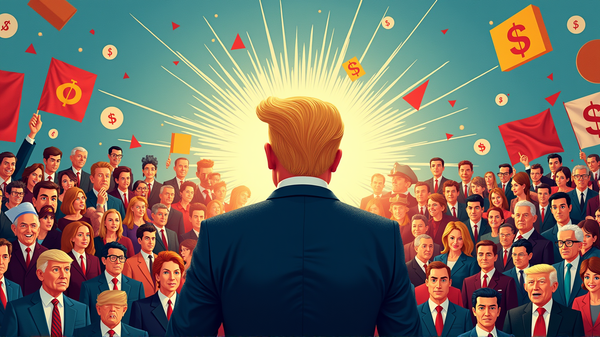Unraveling the K-Shaped Economy: What It Means for You
In a world where economic divides are hardening, the concept of a “K-shaped” economy emerges as a poignant metaphor for the increasing wealth gap among Americans. But what does it truly mean when economists refer to an economy as “K-shaped”? And more importantly, how does it affect you?
The K-Shaped Illustration
Picture the letter “K” — its diverging strokes, each telling a distinct tale of the economic journey in the U.S. today. On one side, the upward movement signifies the prospering upper-income households enjoying a life buoyed by lucrative stock markets and thriving luxury consumption. But contrast it with the despairing downward stroke, symbolizing the struggles of those weighed down by stagnant wages and burgeoning debts.
Consumer Spending: A Tale of Two Realities
Consumer spending, the lifeblood of America’s economic activity, showcases a stark divide. According to CBS News, the wealthiest ten percent now account for nearly half of all consumer spending, their power growing post-pandemic. Meanwhile, those further down the economic ladder find themselves grappling with higher inflation and mounting bills, struggling to keep pace with even modest spending increases.
Riding the Stock Market Wave
Affluent Americans rejoice as stock markets remain bullish, largely fueled by the thrilling prospects of advancements like artificial intelligence. For these households, whose portfolios heavily favor equities and mutual funds, this year promises robust financial returns. However, for many ordinary families untouched by Wall Street’s exuberance, the disconnect between financial markets and everyday economic reality couldn’t be more glaring.
Wage Growth: A Double-Edged Sword
Disparities extend to income growth as well. As higher-income households see a prominent rise in their annual wage growth, lower-income groups face a disconcerting plateau. According to CBS News, this contributes further to the unease permeating middle to lower-income demographics already battling an increasing cost burden.
The Enduring Struggle of Lower-Income Families
Battling daily costs, lower-income families face an uphill fight in an ever-tense economic landscape. Spiraling into higher credit card debts and with little buffer against economic downturns, many tread cautiously amidst an unrelenting “K” economy.
The economy is in flux, and understanding its dynamics helps us navigate its complexities better. The dichotomy of the K-shaped economy is more than a theoretical concept; it’s a lived reality requiring thoughtful discourse and actionable policies.
For all of us, recognizing these patterns enables more informed decisions and better prepares us for the challenges that lie ahead.




